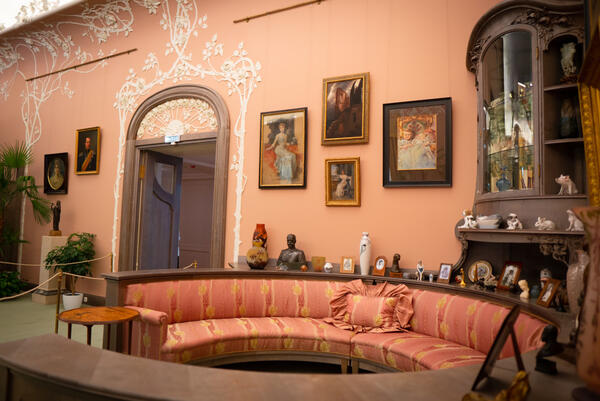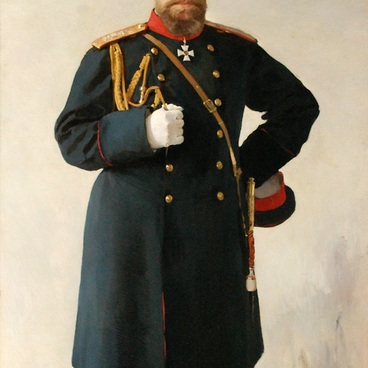The bust of Nicholas II is one of the works by the Italian sculptor and artist Pietro Canonica, created during the time of his work in Russia.
The sculptor’s artistic career began quite early. At the age of fourteen he began to work on commission, and by the age of sixteen he had his own studio. In 1892, Pietro Canonica was involved in designing and erecting a large memorial to Victor Emmanuel II in Rome, which won him universal acclaim. Throughout his life, he created unique sculptures, statues, busts and tombstones in marble and his legacy is immense, most of which is preserved in his house-museum in Italy.
The sculptor started his work in Russia in 1908, when he met Grand Duke Vladimir Alexandrovich. He commissioned the sculptor to make a bust of his wife. The sculptor was extremely popular in Imperial Russia, a fact confirmed by a series of busts of princes and members of their families — the busts of Princesses Victoria Feodorovna (1908) and Irina Yusupova (1910), Count A. Sheremetev (1910), and the Grand Duke’s granddaughters Elizabeth and Olga (1910).
In 1910, Canonica was introduced to Emperor Nicholas II. Having become famous, in particular, as an artist of children’s portraits in sculpture, Canonica expected to be commissioned to make portraits of the Emperor’s children. In February of the same year, he began work on a bust of Tsesarevich. Empress Alexandra Feodorovna always attended the sittings. She was so impressed with the sculptor’s work that she soon commissioned a bust of Nicholas II as well. Later, Canonica also made a bust of the empress.
The portrait of the emperor was made in bronze, and those of the empress and the heir apparent in marble. The sculptor also succeeded in obtaining and carrying out a commission for a series of smaller busts of the emperor, which were intended as gifts for military units and government institutions.
One of the sculptor’s last works in Russia was a design for a monument to Alexander II, which was supposed to be erected in Tsarskoe Selo. However, because of the First World War and the events that followed, the project was never realized. Today, the preserved bust of Nicholas II has returned to its historical place in the Maple Drawing Room of the Alexander Palace.
The sculptor’s artistic career began quite early. At the age of fourteen he began to work on commission, and by the age of sixteen he had his own studio. In 1892, Pietro Canonica was involved in designing and erecting a large memorial to Victor Emmanuel II in Rome, which won him universal acclaim. Throughout his life, he created unique sculptures, statues, busts and tombstones in marble and his legacy is immense, most of which is preserved in his house-museum in Italy.
The sculptor started his work in Russia in 1908, when he met Grand Duke Vladimir Alexandrovich. He commissioned the sculptor to make a bust of his wife. The sculptor was extremely popular in Imperial Russia, a fact confirmed by a series of busts of princes and members of their families — the busts of Princesses Victoria Feodorovna (1908) and Irina Yusupova (1910), Count A. Sheremetev (1910), and the Grand Duke’s granddaughters Elizabeth and Olga (1910).
In 1910, Canonica was introduced to Emperor Nicholas II. Having become famous, in particular, as an artist of children’s portraits in sculpture, Canonica expected to be commissioned to make portraits of the Emperor’s children. In February of the same year, he began work on a bust of Tsesarevich. Empress Alexandra Feodorovna always attended the sittings. She was so impressed with the sculptor’s work that she soon commissioned a bust of Nicholas II as well. Later, Canonica also made a bust of the empress.
The portrait of the emperor was made in bronze, and those of the empress and the heir apparent in marble. The sculptor also succeeded in obtaining and carrying out a commission for a series of smaller busts of the emperor, which were intended as gifts for military units and government institutions.
One of the sculptor’s last works in Russia was a design for a monument to Alexander II, which was supposed to be erected in Tsarskoe Selo. However, because of the First World War and the events that followed, the project was never realized. Today, the preserved bust of Nicholas II has returned to its historical place in the Maple Drawing Room of the Alexander Palace.





